In June 1977, Teheran mayor Gholam Reza Nikpay visited Seoul to meet with his Korean counterpart, Ku Ja-choon. South Korea and Iran first established diplomatic relations in 1962 (in fact, cultural exchange began 1,600 years ago due to the Silk Road), some 200,000 Koreans worked on construction sites in that Middle Eastern country in the 1970s, and Iran generously kept the pipelines open to Korea during the 1973 oil crisis. So conditions were good even before the NikpayᅳKu confab. Nikpay made an offer to which Ku and the Seoul City Council were amenable: renaming a street in each city. Soon, there was a Seoul Boulevard in Teheran’s Evin district; Seoul Park opened close by in 2003, driven by the ever-growing popularity of Korean youth culture.
And here, Samneung-ro, in a remote part of Gangnam (which had only been incorporated within the city limits in 1963) became Teheran-ro. The area around this four-kilometer-long east-west thoroughfare was mostly farmland in 1977, crisscrossed by gravel roads. Not even Nostradamus could have known that in time it would be adorned with some of Korea’s tallest skyscrapers and most expensive real estate. Samsung, Hyundai, POSCO, Google, Naver and other financial heavy-hitters have offices on Teheran-ro.
In early 1979, less than two years after those streets had been rechristened, Iran was in turmoil. I well remember the scowling visage of Ayatollah Khomeini and the fanatical following he had. I am not here to defend the Peacock Throne regime of Mohammed Reza Pahlavi (the “Shah”), but was it not better than what Khomeini and the mullahs wrought? One of their many victims was Nikpay—executed on April 11, 1979 on orders of a self-styled revolutionary tribunal. He was denied legal representation and given no opportunity to defend himself. The Islamic Republic was and still is known for killing people on trumped-up charges.
The two streets retain their names despite Korean qualms about Iran’s human rights record, its nuclear program and its alliance with North Korea. The Iranians, of course, are well aware of South Korea’s close ties to the USA which Khomeini was fond of calling “the Great Satan.”
It so happens that I live and work quite close to Teheran-ro—not just the street, but a monument which commemorates Nikpay’s visit and the renaming. The tricolor Iranian flag flies over it 365 days a year. I heard what sounded like a protest there last Saturday, but that is hardly unusual; people are always protesting in Seoul. Nevertheless curious, I rode my bike there and took note of about 40 young women and men—some Korean, some Iranian and some of European descent—chanting and holding signs in Korean, Persian and English. They also waved the Iranian flag, but one slightly different from that which has obtained since 1979. The lion-and-sun motif, long a symbol of Iranian identity (and, it must be admitted, royalty), had been restored. It took the place of what Khomeini et al. had ordered up: four curves, a sword and a diacritical mark combined to form a stylized version of the word “Allah,” plus text in the Kufic script stating the Takbir (“Allahu akbar”). I bring it to your attention that Islamic terrorists were screaming the Takbir as they flew airplanes into New York City’s twin towers on September 11, 2001.
The basic issue is one of which I was already aware: the hijab and the full-length chador. Mandatory for Iranian women since the revolution, all but the most devout have come to detest wearing the hijab and do so only because they must.
To say the very least, I am not in favor of the government which has ruled Iran for the last 44 years. These self-righteous theocrats, every one of them male, are obsessed with forcing women to cover up. They insist that by doing so, they are enjoining what is good and forbidding what is wrong—as it is written in the Quran.
On September 13, 2022, 22-year-old Mahsa Amini was arrested in Teheran by the guidance patrol, known colloquially as the morality police. She was wearing the hijab but had dared to let some of her hair peek out. For this offense, she was severely beaten, although the authorities denied it. Thrown inside a police van, she was further beaten, tortured and insulted, as reported by some co-detainees. For two days, Amini lay in a coma (why would a healthy young woman suddenly go into a coma?) at Kasra Hospital. The news of her death was reported by a female journalist named Naloofar Hamedi, and for her efforts she, too, was arrested. Hamedi tweeted a photo of Amini’s grieving and crying parents which spiraled into nationwide and international protests—one of which I witnessed in my neighborhood last week.
I have an Iranian friend, A—– O—–, who, having lived in Paris, Montreal and now Los Angeles, is thoroughly Westernized. She has told me how many people in her country object to these policies and the whole regime. They are sick and tired of being governed by Ali Khamenei, Iran’s supreme ruler since Khomeini’s death in 1989. Although A—– stops short of saying that she wants a revolution, I don’t. I support the people there, female and male alike, and want them to have full political, religious, social and cultural freedom. Sharia has got to go, and those people working for the morality police need to find new jobs.
Finally, I must point out that the Evin district of Teheran, through which Seoul Street runs, is home to the notorious Evin Prison. There, some of the American hostages seized in the 1979 takeover of the U.S. Embassy cooled their heels for 444 days. Despite intermittent calls by conservative Seoulites to revert the name of Teheran-ro to Samneung-ro, that has not occurred. For better or worse, it is entrenched and remains synonymous as one of the city’s main hubs for finance, high-tech and intellectual property.
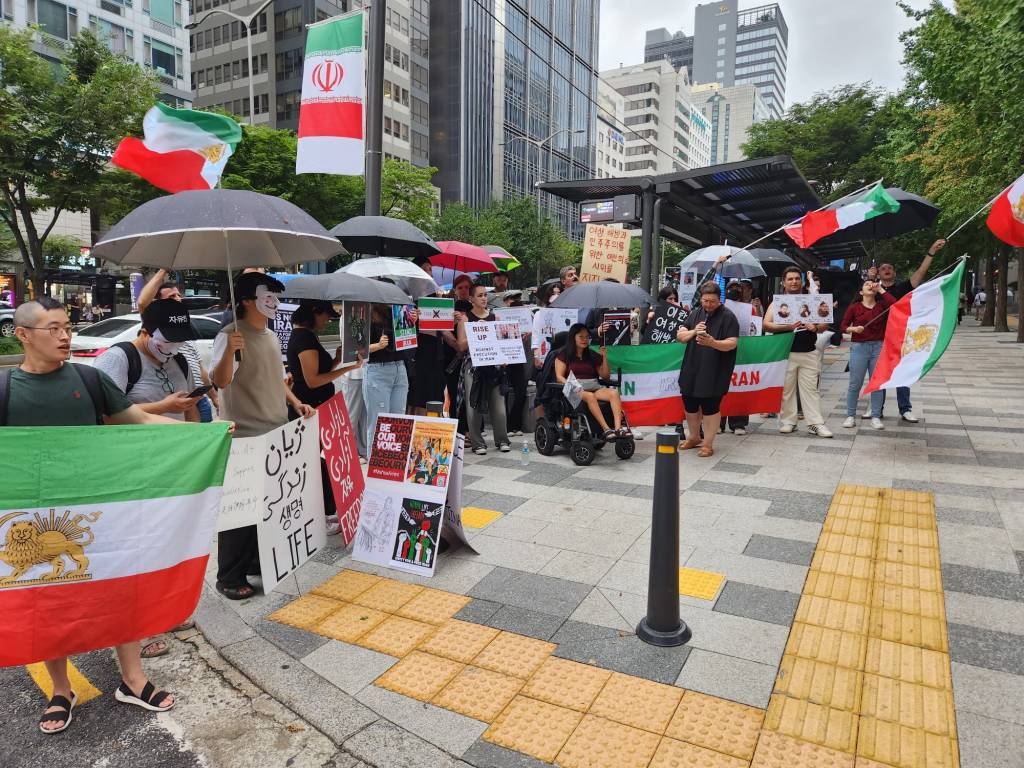
September 16, 2023 in Seoul…
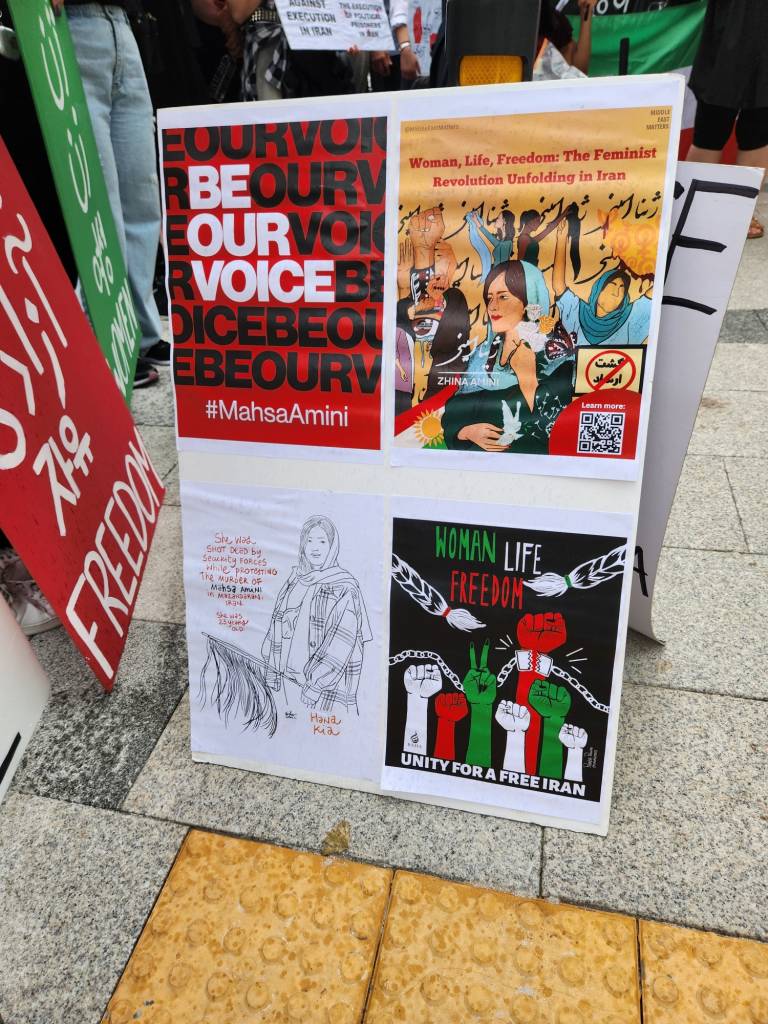
Woman, life, freedom…
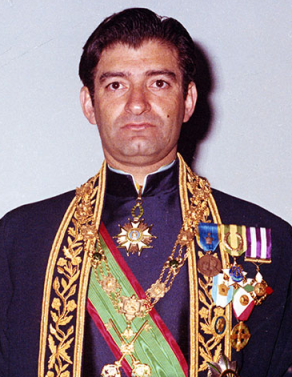
Gholam Reza Nikpay, d. 1979…
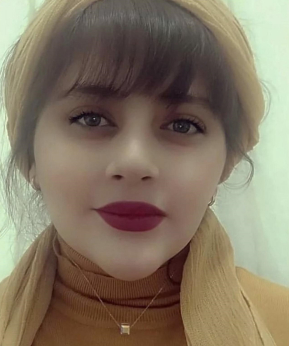
Mahsa Amini, d. 2022…
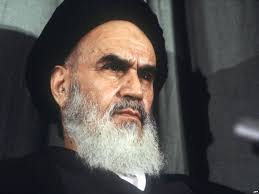
Smile, Ayatollah!
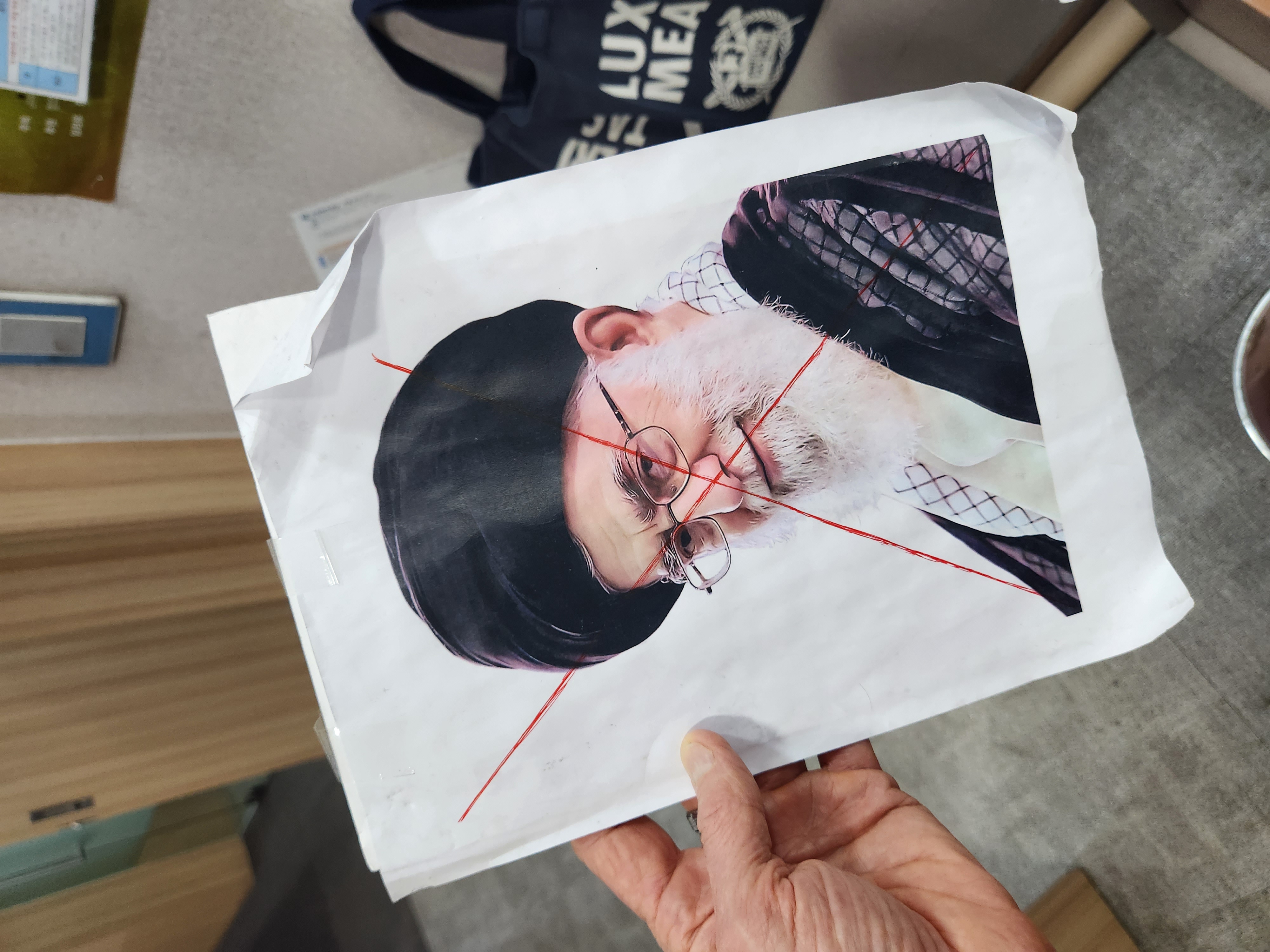
Ali Khamenei; this is my souvenir from September 16, 2023…
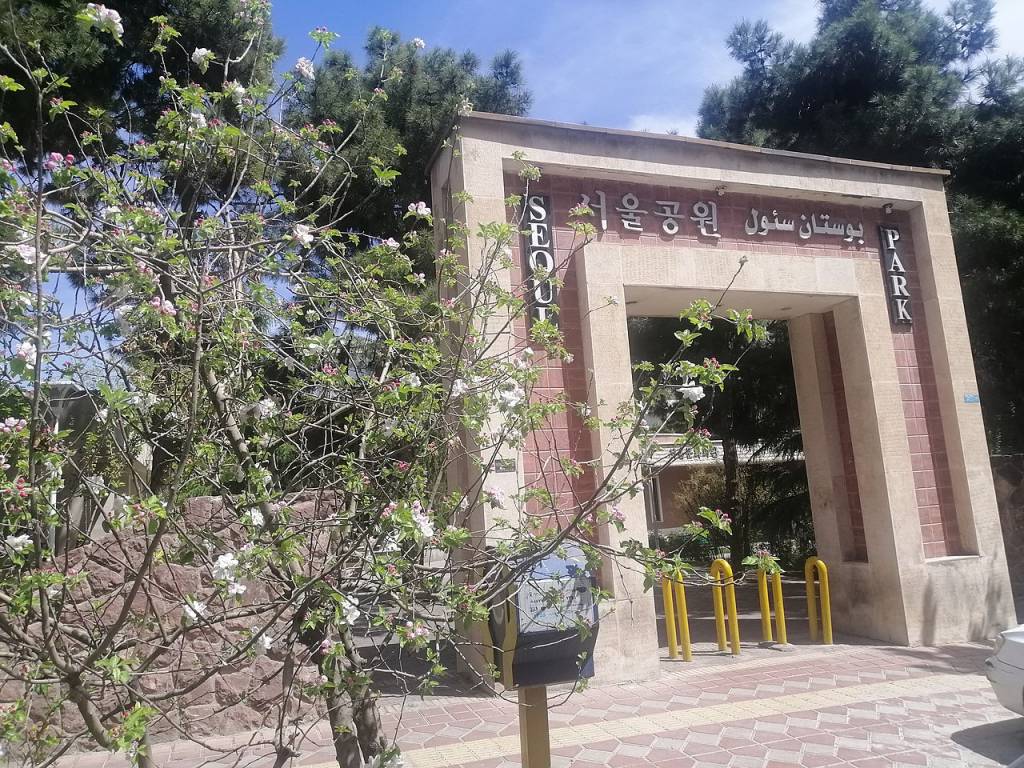
Seoul Park in Teheran…

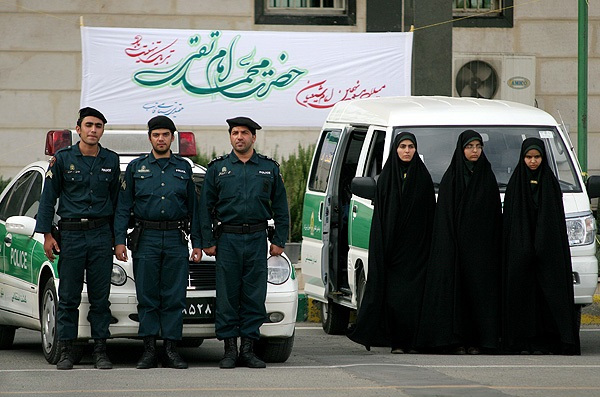
Add Comment